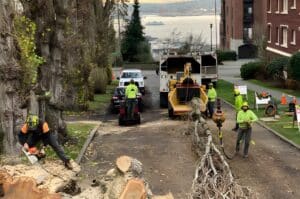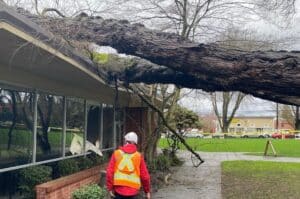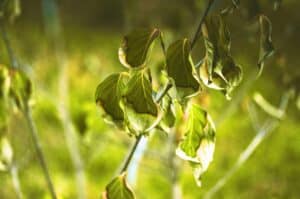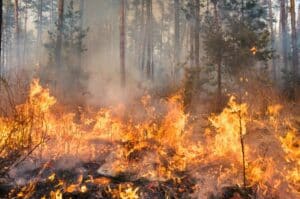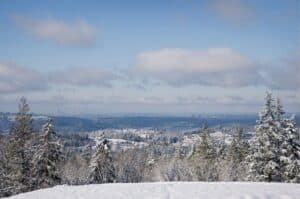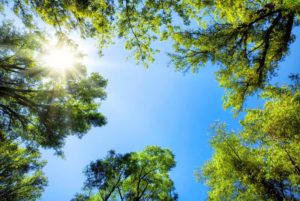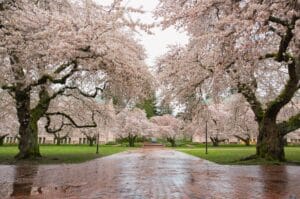Protecting Trees from Ice and Snow
Ice and snow can damage and even kill your trees. Learn how to keep them safe all winter with help from Seattle Tree Care.
Protecting trees from ice and snow is a common tree care concern. High winds, ice, and snow put tremendous pressure on trees growing near houses or power lines. With winter storms passing through the area, you may see damage to your landscape, including broken tree trunks and branches all over your or your neighbor’s property.
A winter storm can easily cause a cracked or rotted tree to fail under its own weight. But if wind is strong enough or snowfall is heavy enough, even healthy trees can be uprooted or broken.
Excessive snow can be very damaging. The added weight can bend, break and split tree branches or trunks, causing them to fall or uproot.
Protecting Trees from Ice and Snow at Home
Check your trees for overextended branches. Overextended branches is an Arborist term that means:
- Branches that are horizontal or downward growing
- Branches that have the majority of their foliage concentrated at the end of the branch
- Branches that are unusually long for the tree species
It’s a good idea to have your Arborist prescribe pruning of overextended branches before the next extreme weather event.
Spruce and fir trees with spreading branches are more likely to be damaged by heavy snowfall than trees with more steeply angled branches.
Arborvitae – evergreen shrubs with tall, narrow growth habits planted in hedges or as foundation screens – are good examples of plants that don’t handle heavy snow well. They tend to grow tall, with multi-stemmed branches that separate under the weight of snow. Too often, they do not return to their upright form after the snow melts, and become permanently disfigured.
The Upside of Snow
Snow isn’t always bad for your trees. Snow helps insulate the ground, moderating temperature changes for the soil below. This keeps the ground from heating and cooling as air temperatures fluctuate.
Heating and cooling often cause the ground to heave, which can be damaging to roots. Keeping the ground temperature stable is more conducive to healthy roots.
And a little breakage isn’t always bad. Nature prunes trees too. Wet snow may break off small twigs and broken or dead branches. It’s a good idea to follow up nature’s pruning with some strategic cleaning cuts by a professional Arborist.
With no leaves on the tree, an Arborist can better evaluate a tree’s architecture and spot dead or diseased branches. Arborists, especially ones well familiar with common trees and tree issues in our area, can still identify dead from live branches even without foliage.
SEE MORE ARTICLES FROM OUR b(LOG)
We've got you covered with tips, resources, updates, how-to's, and other helpful information about trees and landscapes in Seattle, Puget Sound, and King County, WA. Join the thousands of smart local residents who get the monthly newsletter from Seattle Tree Care for helpful information you won't want to miss!
There's no spam - we promise! We are committed to keeping your e-mail address confidential. We do not sell, rent, or lease our contact data or lists to third parties.

